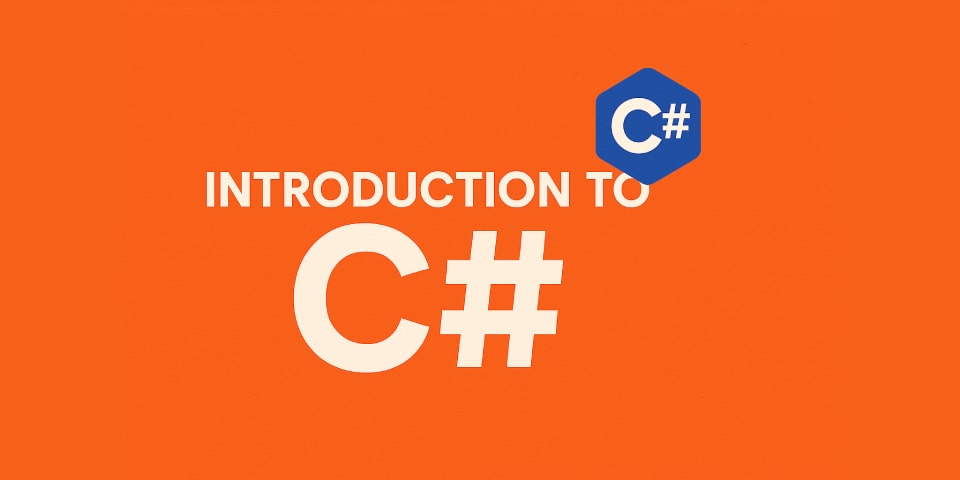
Introduction to C#
What is the difference between value types and reference types?
Answer:
In C#, types are divided into:
- Value types (e.g.
int,double,bool,struct): hold the actual value directly. When passed as arguments to a function, the value is copied. - Reference types (e.g.
class,string,object,array): hold a reference to the memory location. When passed, the address is passed, not a copy.
Practical consequence: Modifying a reference object inside a method will change the original. With value types, it won’t.
What is the role of var compared to explicit types?
Answer: var is a keyword that allows the compiler to infer the variable’s type automatically, provided it’s initialized immediately.
Example:
var name = "Manuel"; // string
var number = 42; // intIt’s useful for writing cleaner code, especially with LINQ.
It’s not synonymous with “weak typing”: the type is still determined at compile-time.
How does exception handling work (try, catch, finally)?
Answer:
It’s the mechanism for managing errors in a controlled way.
try
{
int x = int.Parse("abc"); // Exception
}
catch (FormatException ex)
{
Console.WriteLine("Format error.");
}
finally
{
Console.WriteLine("This part always executes.");
}- try: wraps code that might throw an exception
- catch: handles a specific exception (you can have multiple blocks)
- finally: always runs, useful for releasing resources
Object-Oriented Programming (OOP)
Explain inheritance, encapsulation, and polymorphism
Answer:
- Inheritance: a class can inherit members from a base class (
: BaseClass), avoiding duplication - Encapsulation: protects data via visibility (
private,protected,public) and exposes it through properties/methods - Polymorphism: the same method behaves differently depending on the instance. Achieved via
virtual,override, or interfaces
Example:
public class Animal
{
public virtual void Sound() => Console.WriteLine("Generic sound");
}
public class Dog : Animal
{
public override void Sound() => Console.WriteLine("Bark");
}Difference between abstract, virtual, override, sealed
Answer:
- abstract: forces derived classes to implement the method
- virtual: defines a method that can be overridden
- override: redefines a virtual or abstract method
- sealed: prevents further overriding or inheritance
Example:
public abstract class Vehicle
{
public abstract void Move();
}
public class Car : Vehicle
{
public override void Move() => Console.WriteLine("The car moves");
}What are interfaces in C#?
Answer:
An interface (interface) is a contract that only defines method signatures (no implementation). A class implementing it must define all members.
public interface IPrintable
{
void Print();
}
public class Document : IPrintable
{
public void Print()
{
Console.WriteLine("Printed");
}
}Interfaces are essential for loosely coupled programming, testability, and dependency injection.
Delegates, LINQ, and async
What is a delegate?
Answer:
A delegate is a type that represents a reference to a method with a specific signature.
It allows passing methods as parameters.
delegate int Operation(int x, int y);
public static int Add(int a, int b) => a + b;
Operation op = Add;
Console.WriteLine(op(3, 4)); // Output: 7Useful with events, callbacks, and functional programming.
What is LINQ and how is it used?
Answer:
LINQ (Language Integrated Query) is a set of methods for querying collections in C# using fluent syntax.
Example:
List<int> numbers = new List<int> { 1, 2, 3, 4, 5 };
var evens = numbers.Where(n => n % 2 == 0).ToList();Works on DB, XML, in-memory objects.
Allows filtering (Where), transformations (Select), sorting (OrderBy), aggregations (Sum, Count, etc.)
Explain async, await, and Task
Answer:
C# supports asynchronous programming using async/await to handle non-blocking operations.
public async Task<string> GetDataAsync()
{
await Task.Delay(1000); // Simulate wait
return "Response ready";
}- async: marks the method as asynchronous
- await: suspends execution until the operation completes
Useful for I/O, HTTP calls, DB access, etc.
Data Access
Difference between ADO.NET and Entity Framework
Answer:
- ADO.NET: manual DB access with
SqlConnection,SqlCommand, etc. - Entity Framework (EF): ORM that maps objects to tables, simplifies operations
ADO.NET example:
using var conn = new SqlConnection(connString);
conn.Open();
var cmd = new SqlCommand("SELECT * FROM Clients", conn);
using var reader = cmd.ExecuteReader();EF example:
var clients = context.Clients.Where(c => c.Active).ToList();How to protect against SQL Injection?
Answer:
Use parameterized queries — never concatenate user input directly:
cmd.CommandText = "SELECT * FROM Users WHERE Name = @name";
cmd.Parameters.AddWithValue("@name", userInput);In EF, it’s automatically handled via LINQ.
Best Practices
What is IDisposable and how is it used?
Answer: IDisposable is an interface that defines the Dispose() method for releasing unmanaged resources (e.g. files, DB)
public class FileHandler : IDisposable
{
private StreamReader reader;
public FileHandler(string path)
{
reader = new StreamReader(path);
}
public void Dispose()
{
reader?.Dispose();
}
}With using, Dispose() is called automatically.
What are the SOLID principles?
Answer:
- S - Single Responsibility: Each class should have one clear responsibility
- O - Open/Closed Principle: Code should be open to extension, closed to modification
- L - Liskov Substitution: Derived classes should be substitutable for base ones without breaking logic
- I - Interface Segregation: Interfaces should be specific, not force implementation of unnecessary methods
- D - Dependency Inversion: Dependencies should be abstract (e.g. via interfaces), not concrete
These principles help write scalable, testable, maintainable code.
Common Practice Exercises
Write a function that sums only even numbers in a list
public int SumEven(List<int> numbers)